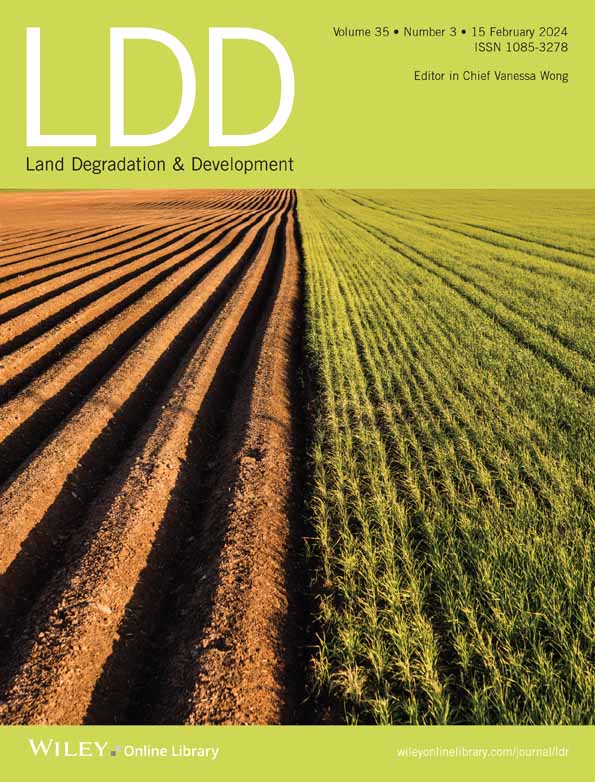Ecological improvement of takyric solonetz in northern China using modified ridge cultivation with drip irrigation
Abstract
Soil salinization is one of the most important forms of land degradation in drylands of the world. As a typical type of saline-sodic soil, takyric solonetz seriously jeopardizes the living environment of the inhabitants with severe consequences for regional ecology, agriculture, and the aeolian dust dynamics. Improving the vegetation and ecology status of takyric solonetz is essential but challenging because of its extremely drought conditions with low saturated hydraulic conductivities (ks <0.1 mm/day). Here, we conducted a three-year field experiment by three-stage drip irrigation to regulate the water and salt levels of the soil and improved ridge cultivation through sand as a water dispersal media strip for takyric solonetz in northern China. Results showed that the planting ridge was desalted after 3-year treatments of drip irrigation. The electrical conductivity of a saturated soil paste extract reduced from 21.28 and 13.38 to below 3.00 dS/m, indicating a decrease of 91.50% and 88.50% in the 0–40 cm and 0–120 cm soil layers, respectively. The pH of the soil paste extract decreased from 11.13 to 9.78 in the 0–120 cm soil layer. The survival rate of the willow saplings planted for a shelterbelt was 91.60%. The height, diameter at breast height, and ground diameter of the willow increased slowly to 84.60 cm, 1.20 mm, and 2.02 mm in the first 2 years, respectively, but increased rapidly to 121.90 cm, 7.48 mm, and 12.02 mm, respectively, in the third year. Our treatment also substantially changed the understory vegetation status, in terms of vegetation coverage (89%), number of species (18), and density (600 plant m−2). The dominant plant family in the vegetation community shifted from the Amaranthaceae to the Poaceae. This study provides and validates a new technology for ecological improvement of takyric solonetz, supporting a theoretical and practical approach for ecosystem and vegetation improvement in takyric solonetz in the future.
CONFLICT OF INTEREST STATEMENT
The authors declare that they have no known competing financial interests or personal relationships that could have appeared to influence the work reported in this article.
Open Research
DATA AVAILABILITY STATEMENT
The data that support the findings will be available in [repository name] at [DOI/URL] following an embargo from the date of publication to allow for commercialization of research findings.




